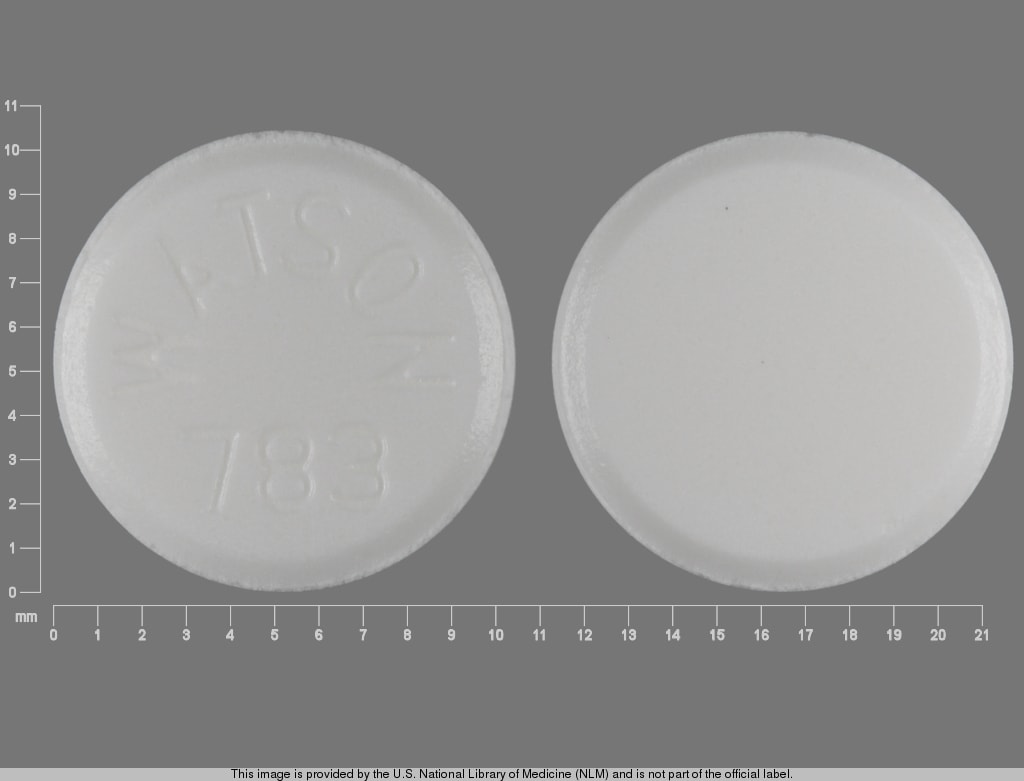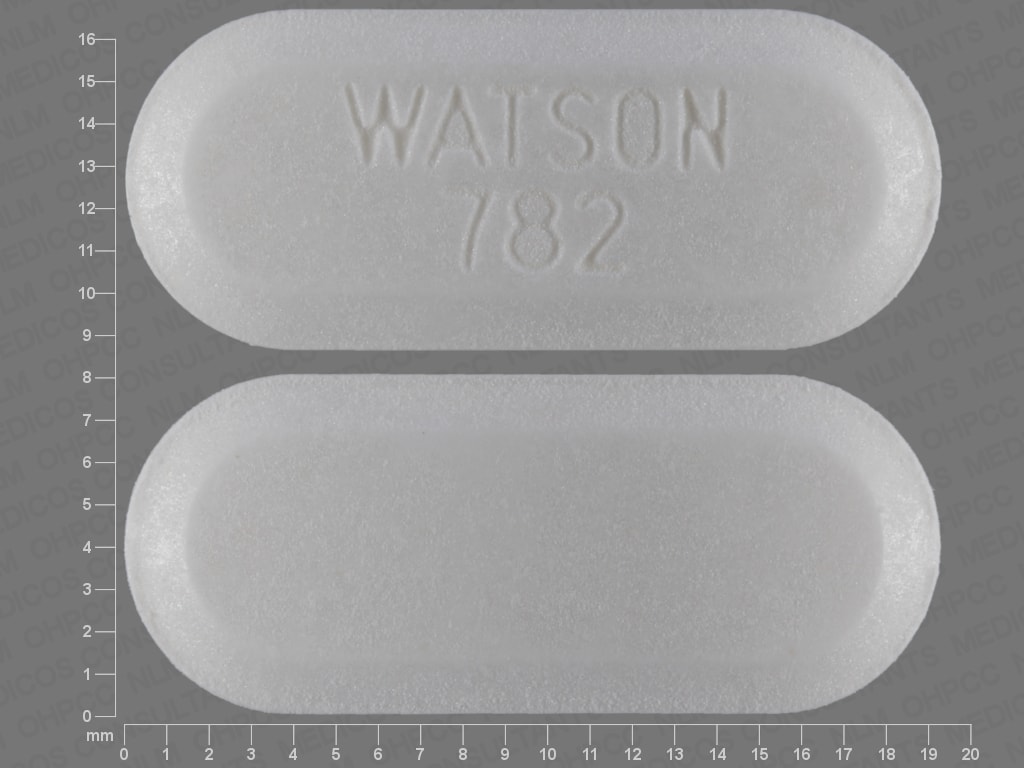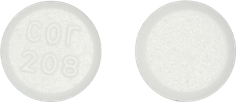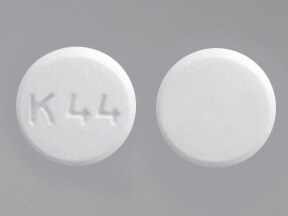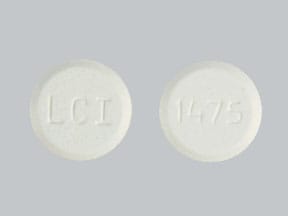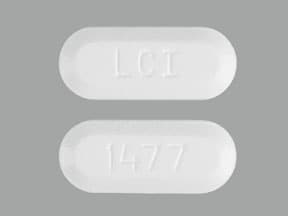Dosage Forms
Excipient information presented when available (limited, particularly for generics); consult specific product labeling.
Tablet, Oral, as hydrochloride:
Generic: 25 mg
Tablet Extended Release 24 Hour, Oral, as hydrochloride:
Generic: 75 mg
Pharmacology
Mechanism of Action
Diethylpropion is a sympathomimetic amine with pharmacologic properties similar to the amphetamines. It is also structurally similar to bupropion. The mechanism of action in reducing appetite appears to be secondary to CNS effects, including stimulation of the hypothalamus to release norepinephrine
Pharmacokinetics/Pharmacodynamics
Metabolism
Forms active metabolites via N-dealkylation and reduction
Excretion
Urine
Half-Life Elimination
Aminoketone metabolites: ∼4-6 hours
Use: Labeled Indications
Obesity: Short-term (few weeks) adjunct in the management of exogenous obesity
Pharmacotherapy for weight loss is recommended only for obese patients with a body mass index ≥30 kg/m2, or ≥27 kg/m2 in the presence of other risk factors such as hypertension, diabetes, and/or dyslipidemia or a high waist circumference; therapy should be used in conjunction with a comprehensive weight management program.
Contraindications
Hypersensitivity or idiosyncrasy to diethylpropion or other sympathomimetic amines; advanced arteriosclerosis, severe hypertension; pulmonary hypertension; hyperthyroidism; glaucoma; agitated states, history of drug abuse; during or within 14 days following MAO inhibitor therapy, concurrent use with other anorectic agents
Dosage and Administration
Dosing: Adult
Obesity: Oral:
Immediate release: 25 mg 3 to 4 times daily
Controlled release: 75 mg once daily
Dosing: Geriatric
Refer to adult dosing.
Dosing: Pediatric
Adolescents >16 years: Refer to adult dosing.
Administration
Immediate release: Administer 1 hour before meals; may also administer 1 tablet midevening (to overcome night hunger).
Controlled release: Swallow whole; administer at midmorning.
Dietary Considerations
Most effective when combined with a low calorie diet and behavior modification counseling. Take immediate release tablet 1 hour before meals or food.
Storage
Store at room temperature, below 30°C (86°F).
Diethylpropion Images
Drug Interactions
Acebrophylline: May enhance the stimulatory effect of CNS Stimulants. Avoid combination
Alcohol (Ethyl): May enhance the adverse/toxic effect of Diethylpropion. Monitor therapy
Amifampridine: Agents With Seizure Threshold Lowering Potential may enhance the neuroexcitatory and/or seizure-potentiating effect of Amifampridine. Monitor therapy
AtoMOXetine: May enhance the hypertensive effect of Sympathomimetics. AtoMOXetine may enhance the tachycardic effect of Sympathomimetics. Monitor therapy
BuPROPion: May enhance the neuroexcitatory and/or seizure-potentiating effect of Agents With Seizure Threshold Lowering Potential. Monitor therapy
Cannabinoid-Containing Products: May enhance the tachycardic effect of Sympathomimetics. Exceptions: Cannabidiol. Monitor therapy
Cocaine (Topical): May enhance the hypertensive effect of Sympathomimetics. Management: Consider alternatives to use of this combination when possible. Monitor closely for substantially increased blood pressure or heart rate and for any evidence of myocardial ischemia with concurrent use. Consider therapy modification
Doxofylline: Sympathomimetics may enhance the adverse/toxic effect of Doxofylline. Monitor therapy
Esketamine: May enhance the hypertensive effect of CNS Stimulants. Monitor therapy
Guanethidine: May enhance the arrhythmogenic effect of Sympathomimetics. Guanethidine may enhance the hypertensive effect of Sympathomimetics. Monitor therapy
Iobenguane Radiopharmaceutical Products: CNS Stimulants may diminish the therapeutic effect of Iobenguane Radiopharmaceutical Products. Management: Discontinue all drugs that may inhibit or interfere with catecholamine transport or uptake for at least 5 biological half-lives before iobenguane administration. Do not administer these drugs until at least 7 days after each iobenguane dose. Avoid combination
Iohexol: Agents With Seizure Threshold Lowering Potential may enhance the adverse/toxic effect of Iohexol. Specifically, the risk for seizures may be increased. Management: Discontinue agents that may lower the seizure threshold 48 hours prior to intrathecal use of iohexol. Wait at least 24 hours after the procedure to resume such agents. In nonelective procedures, consider use of prophylactic anticonvulsants. Consider therapy modification
Iomeprol: Agents With Seizure Threshold Lowering Potential may enhance the adverse/toxic effect of Iomeprol. Specifically, the risk for seizures may be increased. Management: Discontinue agents that may lower the seizure threshold 48 hours prior to intrathecal use of iomeprol. Wait at least 24 hours after the procedure to resume such agents. In nonelective procedures, consider use of prophylactic anticonvulsants. Consider therapy modification
Iopamidol: Agents With Seizure Threshold Lowering Potential may enhance the adverse/toxic effect of Iopamidol. Specifically, the risk for seizures may be increased. Management: Discontinue agents that may lower the seizure threshold 48 hours prior to intrathecal use of iopamidol. Wait at least 24 hours after the procedure to resume such agents. In nonelective procedures, consider use of prophylactic anticonvulsants. Consider therapy modification
Monoamine Oxidase Inhibitors: May enhance the hypertensive effect of Diethylpropion. Avoid combination
Sibutramine: May enhance the adverse/toxic effect of Centrally Acting Weight Loss Agents. Avoid combination
Solriamfetol: Sympathomimetics may enhance the hypertensive effect of Solriamfetol. Monitor therapy
Solriamfetol: CNS Stimulants may enhance the hypertensive effect of Solriamfetol. Monitor therapy
Sympathomimetics: May enhance the adverse/toxic effect of other Sympathomimetics. Monitor therapy
Tedizolid: May enhance the hypertensive effect of Sympathomimetics. Tedizolid may enhance the tachycardic effect of Sympathomimetics. Monitor therapy
Adverse Reactions
Frequency not defined.
Cardiovascular: Cardiac arrhythmia, cerebrovascular accident, ECG changes, heart valve disease, hypertension, palpitations, tachycardia
Central nervous system: Anxiety, depression, dizziness, drowsiness, dysphoria, euphoria, headache, insomnia, jitteriness, malaise, nervousness, overstimulation, precordial pain, psychosis, restlessness, seizure
Dermatologic: Alopecia, diaphoresis, ecchymoses, erythema, skin rash, urticaria
Endocrine & metabolic: Changes in libido, gynecomastia, menstrual disease
Gastrointestinal: Abdominal distress, constipation, diarrhea, dysgeusia, nausea, vomiting, xerostomia
Genitourinary: Dysuria, impotence
Hematologic & oncologic: Agranulocytosis, bone marrow depression, leukopenia
Neuromuscular & skeletal: Dyskinesia, myalgia, tremor
Ophthalmic: Blurred vision, mydriasis
Renal: Polyuria
Respiratory: Dyspnea, pulmonary hypertension
Miscellaneous: Tachyphylaxis
Warnings/Precautions
Concerns related to adverse effects:
- CNS effects: Amphetamines may impair the ability to engage in potentially hazardous activities (eg, driving or operating machinery).
- Heart failure: In a scientific statement from the American Heart Association, diethylpropion has been determined to be an agent that may cause direct myocardial toxicity (magnitude: major) (AHA [Page 2016]).
- Primary pulmonary hypertension (PPH): A rare, frequently fatal disease of the lungs, PPH has been found to occur with increased frequency in patients receiving some anorexigens, including diethylpropion; use of anorexigens for >3 months has been associated with a 23-fold increase in risk of pulmonary hypertension. If the patient develops signs or symptoms of pulmonary hypertension (eg, exertional dyspnea, angina, syncope, lower extremity edema), discontinue use immediately and evaluate.
- Valvular heart disease: The use of some anorexigens, including diethylpropion, has been associated with the development of valvular heart disease. The risk may be increased with extended use, higher than recommended doses, or concomitant use with other anorexigens. Avoid stimulants in patients with known serious structural cardiac abnormalities, cardiomyopathy, serious heart rhythm abnormalities, or other serious cardiac problems that could increase the risk of sudden death that these conditions alone carry.
Disease-related concerns:
- Diabetes: Use with caution in patients with diabetes mellitus; antidiabetic agent requirements may be altered with anorexigens and concomitant dietary restrictions.
- Hypertension: Use with caution in patients with hypertension and other cardiovascular conditions that might be exacerbated by increases in blood pressure or heart rate; avoid use in patients with severe hypertension.
- Psychiatric disorders: Use with caution in patients with preexisting psychosis or bipolar disorder (may induce mixed/manic episode). May exacerbate symptoms of behavior and thought disorder in psychotic patients; new-onset psychosis or mania may occur with stimulant use; observe for symptoms of aggression and/or hostility.
- Seizure disorders: Avoid or use with caution in patients with history of seizure disorders (Apovian, 2015).
- Tourette's syndrome: Use with caution in patients with Tourette's syndrome; stimulants may unmask tics.
Concurrent drug therapy issues:
- Anorexigens: Safety and efficacy have not been established for use with other weight loss medications, including over-the-counter or herbal products. Not recommended for use in patients who have used other anorectic agents within the past year.
- Sedatives: Effects may be potentiated when used with other sedative drugs or ethanol.
Special populations:
- Elderly: Use caution in this age group due to the risk for causing dependence, hypertension, angina, and myocardial infarction.
Other warnings/precautions:
- Abuse potential: Diethylpropion is pharmacologically related to the amphetamines, which have a high abuse potential; prolonged use may lead to dependency. Prescriptions should be written for the smallest quantity consistent with good patient care to minimize possibility of overdose.
- Discontinuation of therapy: Abrupt discontinuation following high doses or for prolonged periods may result in symptoms for withdrawal. Discontinue if satisfactory weight loss has not occurred within the first 4 weeks of treatment, or if tolerance develops.
Monitoring Parameters
Baseline cardiac evaluation (for preexisting valvular heart disease, pulmonary hypertension); echocardiogram during therapy; weight, waist circumference, blood pressure; renal function in elderly patients
Pregnancy
Pregnancy Risk Factor
B
Pregnancy Considerations
Adverse events have not been observed in animal reproduction studies. Diethylpropion crosses the human placenta; spontaneous reports of congenital malformations have been reported, but an association with diethylpropion has not been established. Withdrawal symptoms may occur in the neonate following maternal use of diethylpropion.
Patient Education
- Discuss specific use of drug and side effects with patient as it relates to treatment. (HCAHPS: During this hospital stay, were you given any medicine that you had not taken before? Before giving you any new medicine, how often did hospital staff tell you what the medicine was for? How often did hospital staff describe possible side effects in a way you could understand?)
- Patient may experience dry mouth, fatigue, lack of appetite, trouble sleeping, bad taste, constipation, diarrhea, nausea, vomiting, agitation, tremors, or abdominal pain. Have patient report immediately to prescriber signs of high blood sugar (confusion, fatigue, increased thirst, increased hunger, passing a lot of urine, flushing, fast breathing, or breath that smells like fruit), signs of severe cerebrovascular disease (change in strength on one side is greater than the other, difficulty speaking or thinking, change in balance, or vision changes), chest pain, fast heartbeat, abnormal heartbeat, behavioral changes, mood changes, sensing things that seem real but are not, severe dizziness, passing out, severe anxiety, severe headache, vision changes, sexual dysfunction, decreased sex drive, chills, sore throat, bruising, bleeding, seizures, shortness of breath, swelling of arms or legs, abnormal movements, severe loss of strength and energy, enlarged breasts (males), or dysmenorrhea (HCAHPS).
- Educate patient about signs of a significant reaction (eg, wheezing; chest tightness; fever; itching; bad cough; blue skin color; seizures; or swelling of face, lips, tongue, or throat). Note: This is not a comprehensive list of all side effects. Patient should consult prescriber for additional questions.
Intended Use and Disclaimer: Should not be printed and given to patients. This information is intended to serve as a concise initial reference for health care professionals to use when discussing medications with a patient. You must ultimately rely on your own discretion, experience, and judgment in diagnosing, treating, and advising patients.
